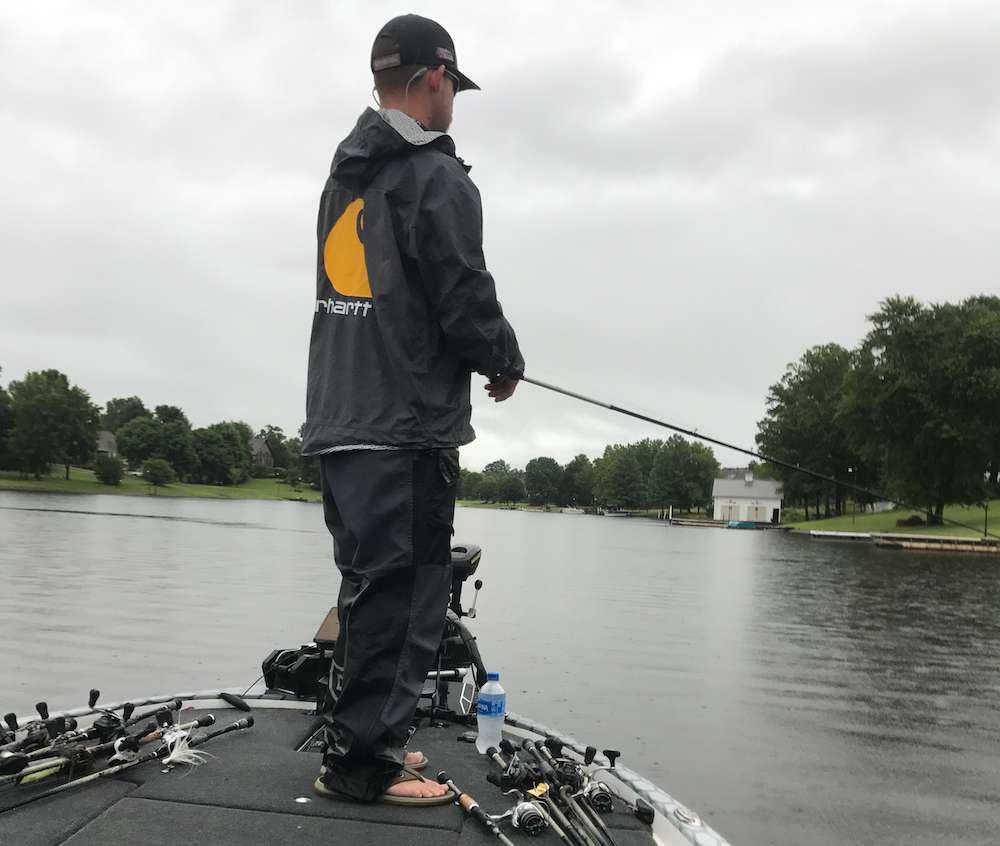
6:14 a.m. Itâs 72 degrees and raining as Monti and I pull into Lake Qâs deserted boat launch. He dons foul-weather gear and pulls an assortment of Denali rods from the Skeeterâs locker. âThis is just the leading edge of a big storm system,â Monti says as he preps the boat for launching. âIt could get real nasty out here today.â
7 HOURS LEFT6:30 a.m. We launch the Skeeter. Monti checks the water temp: 80 degrees. What mode does he predict Lake Qâs bass will be in? âEven though bass have already spawned, there could still be some big fish up shallow, since bluegill are probably on bed now and theyâre a favorite meal for postspawn lunkers. So, Iâll spend some time checking shallow areas with a topwater bait. Many bass could already be offshore, too, and Iâve found that deeper fish arenât as negatively impacted by stormy weather as shallow fish are. Right now Iâm going to drive around the lower end of the lake for a while to get the lay of the land.â6:43 a.m. After idling around, Monti makes his first casts of the day to an offshore rockpile with a bone colored Reaction Innovations Vixen topwater stickbait. Itâs raining harder as he dog-walks the plug across the shallow structure. 7:05 a.m. Monti races uplake to a large cove choked with lily pads and emergent shoreline grass (aka âwater willowâ). He attacks the cover with a green pumpkin Zoom Horny Toad weedless frog and a white 3/Â8-ounce Dirty Jigs swim jig with a matching Zoom Skinny Dipper trailer. 7:10 a.m. A bass nips the swim jig in the shoreline pads but doesnât hook up. âThe swim jig is my go-to shallow-vegetation lure in early summer; you can cover a lot of water quickly with it, then once you find them, you can slow down and flip or punch the grass, which often yields bigger fish.â The wind and rain have picked up considerably as the storm front intensifies. 7:21 a.m. Monti is working along a big pad field with the swim jig. âBass gravitate to something different in pad fields. Theyâll concentrate around isolated pads; the outer edge where the pads meet open water; holes, points and pockets within the pad field; and other irregularities in the cover.â
6 HOURS LEFT7:30 a.m. Another short strike on the swim jig. âTheyâre just pecking at the trailer. Must be small fish.â 7:37 a.m. Monti ties on a homemade 3/Â8-ounce buzzbait with a gold blade and a green pumpkin/black/blue Reaction Innovations Spicy Beaver twin-tail trailer. âHopefully, theyâll be able to hear this bait above the noise of the raindrops hitting the water.â 7:39 a.m. Monti spots a Â2-pound bass cruising along a grassy shoreline and runs the buzzbait past the fish, which follows it a few feet before turning away. 7:41 a.m. Moving along the bank, Monti sees another keeper cruising; it ignores the buzzer. âAt least there are some decent fish up shallow, even though I havenât spotted any bluegill beds yet.â 7:52 a.m. Monti abandons this cove and runs back downlake into another cove; itâs thick with shoreline water willow but no pads. He probes the emergent grass with the swim jig, reeling the bait quickly through the cover while shaking his rod tip to activate the trailer. âIâve caught a lot more big bass out of water willow than I have pads.â The rain has reached monsoon level, and my wet camera has quit working; Monti runs me back to my truck so I can attempt to dry it out while he continues casting. 8:16 a.m. The rain has finally slacked off. I text Monti to pick me up; my camera is dead, so Iâll be taking photos on my iPhone. âI graphed up some juicy-looking offshore brushpiles with fish on them,â he announces, grinning. 8:21 a.m. Monti runs to a nearby cove with multiple docks and shoreline water willow. He ties on a flipping rig consisting of a Spicy Beaver, a wide gap hook and a pegged tungsten sinker, then pitches it to the grass.
5 HOURS LEFT8:33 a.m. Monti flips the Spicy Beaver into a thick patch of water willow on a steep point in the cove. âThis little point drops off quickly to 12 feet. They could feed in this grass, then shoot back down deep.â 8:35 a.m. A bass taps the Beaver; Monti slams back his rod, but the fish shakes free. âThat was a Â2-pounder. Notice the bream beds against the bank? Thatâs why that fish was there.â 8:41 a.m. Itâs stopped raining, and amazingly, blue sky is beginning to show through the clouds. âWow, the air temp has dropped 10 degrees! Summer cold fronts are weird; on some lakes theyâll turn the fish on, but theyâll absolutely kill the bite on other lakes.â 8:44 a.m. Monti catches a short fish on the Beaver. âLittle sucker hit it like a Â6-pounder!â
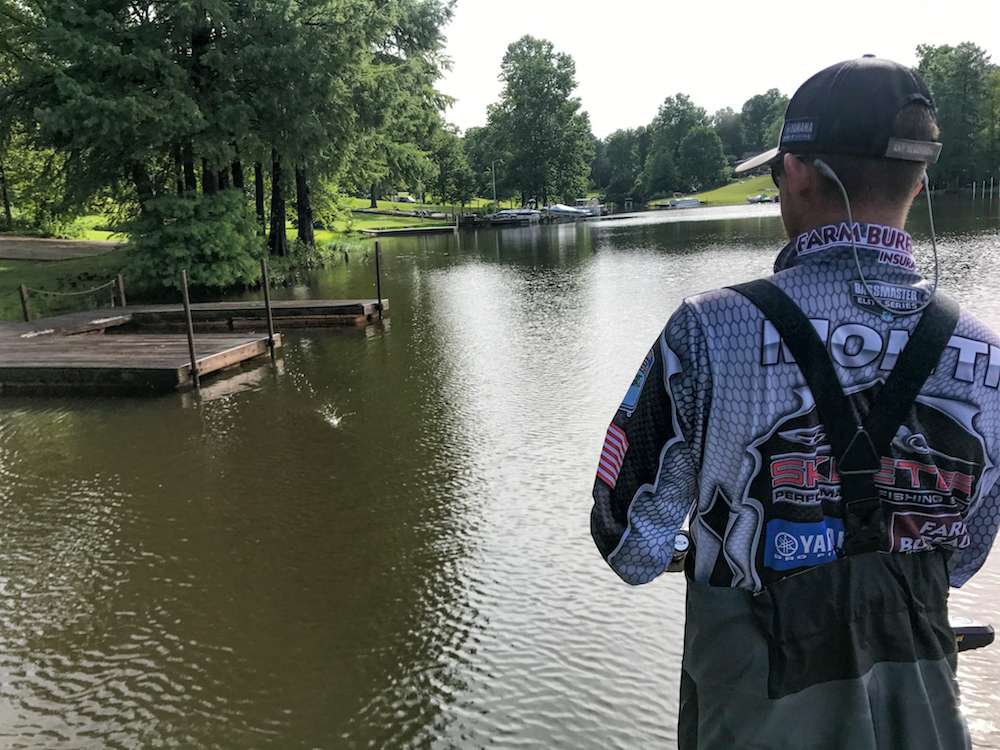
4 HOURS LEFT9:30 a.m. He hangs the jig in a wad of fishing line in the submerged shrubbery. âLooks like Iâm not the only one who knows about that brushpile.â 9:31 a.m. Monti gets a solid tap on the football jig; he swings back his rod but misses the fish. âTypical early spring cold-front strike, yet here it is, almost July!â 9:34 a.m. Monti switches to a Â10-inch watermelon/red Bruiser Baits worm with a 3/Â8-ounce tungsten weight and fishes it around submerged brush. âIf there are any big ones hiding in that brush, this ought to work.â 9:40 a.m. Monti abandons the brushy cove and returns to the submerged rockpile where he started his day. This time he drags it with a green pumpkin/blue Zoom Baby Brush Hog on a Carolina rig. 9:46 a.m. It feels more like October than June on Lake Q as the wind howls, cloud cover moves in and out, and the air temp plummets. Monti is still dragging the Carolina rig around the rockpile without success. âThis crazy weather isnât helping any.â
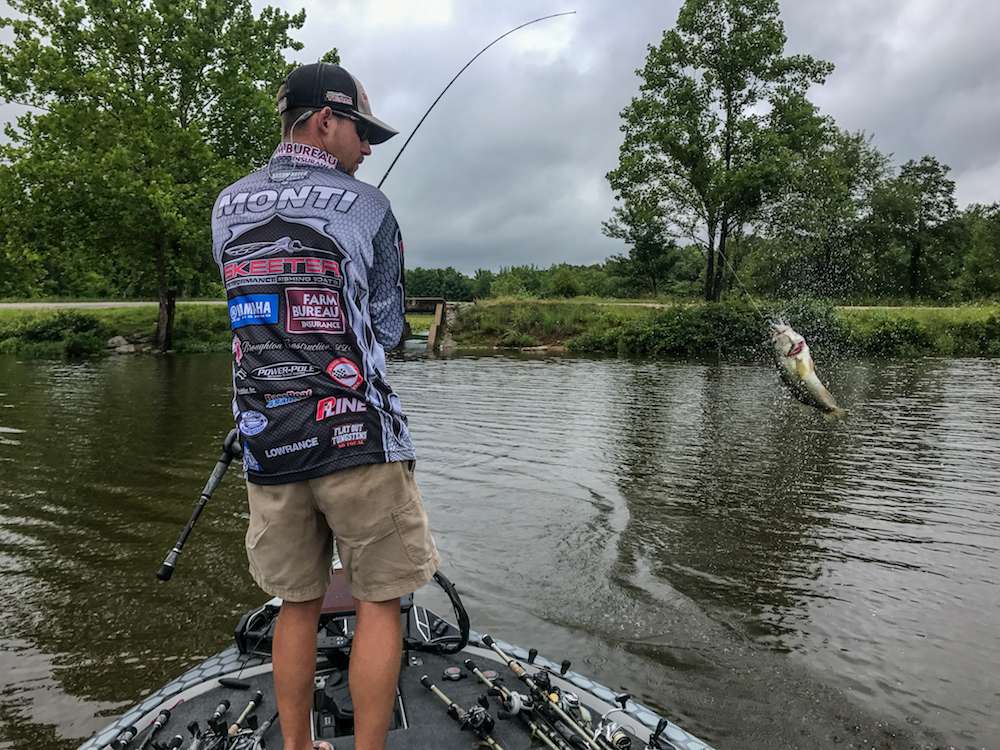
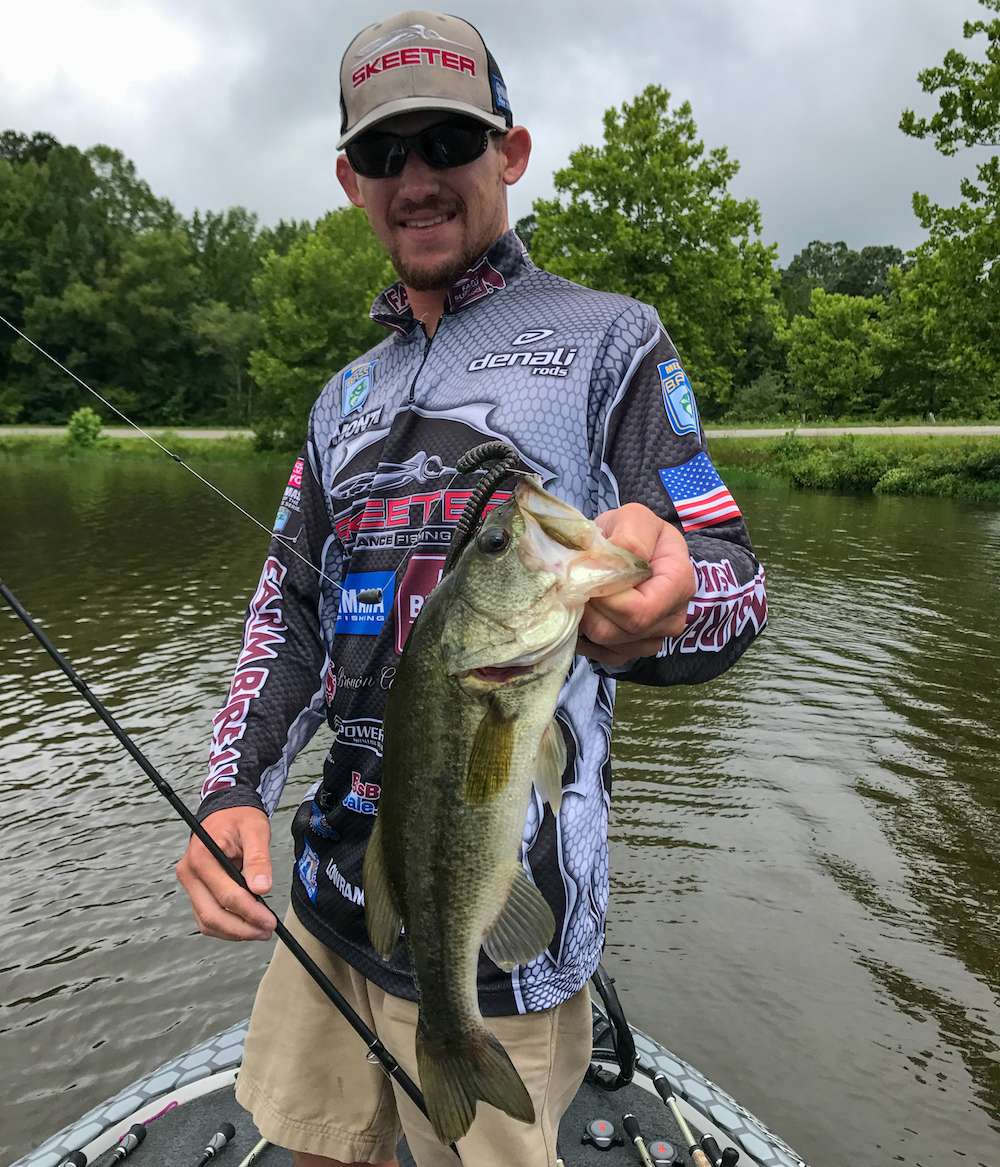
10:11 a.m. A blue heron is stalking surfacing baitfish in the nearby shallows. Monti casts the swim jig into the minnows and the bird takes off, squawking in protest. 10:20 a.m. Monti tries the buzzbait around the murky inflow. Whatâs his take on the day so far? âI found submerged brushpiles holding bass, but they were too small. Shoreline grass and pads havenât panned out yet, but they may attract more fish as the sun gets higher. Thereâs definitely a cold front moving through; although summer cold fronts arenât nearly as severe as spring fronts, they can still negatively impact the bite. Iâve seen some wood cover I need to hit, and I want to idle around and look for more offshore cover with my electronics.â 10:28 a.m. Monti combs a shallow pocket with the swim jig.
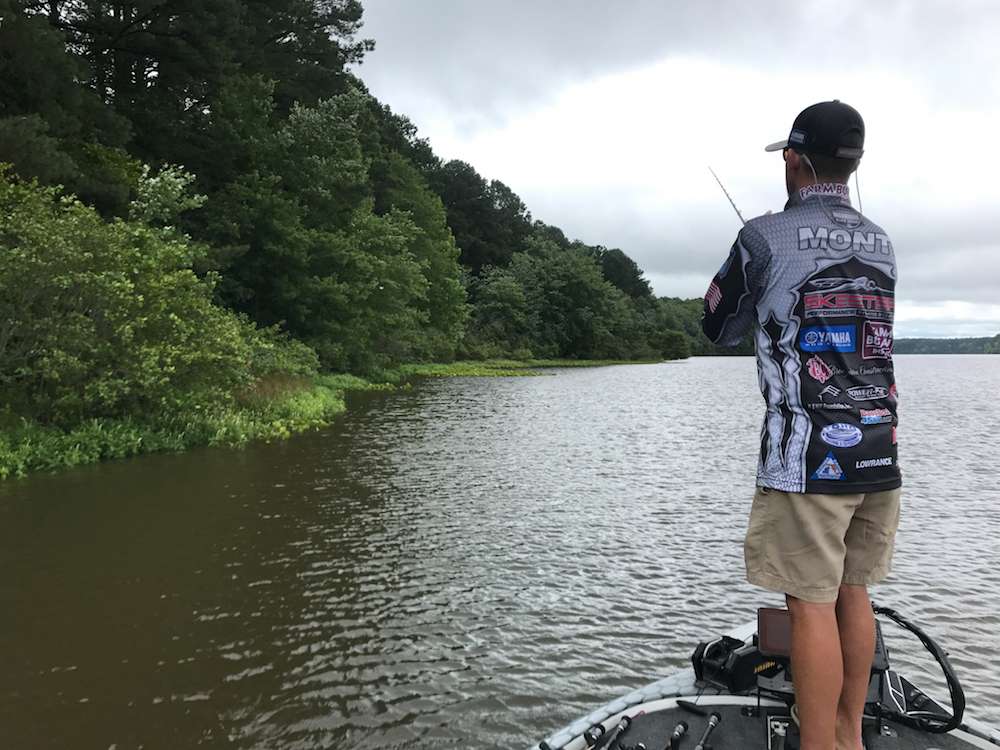
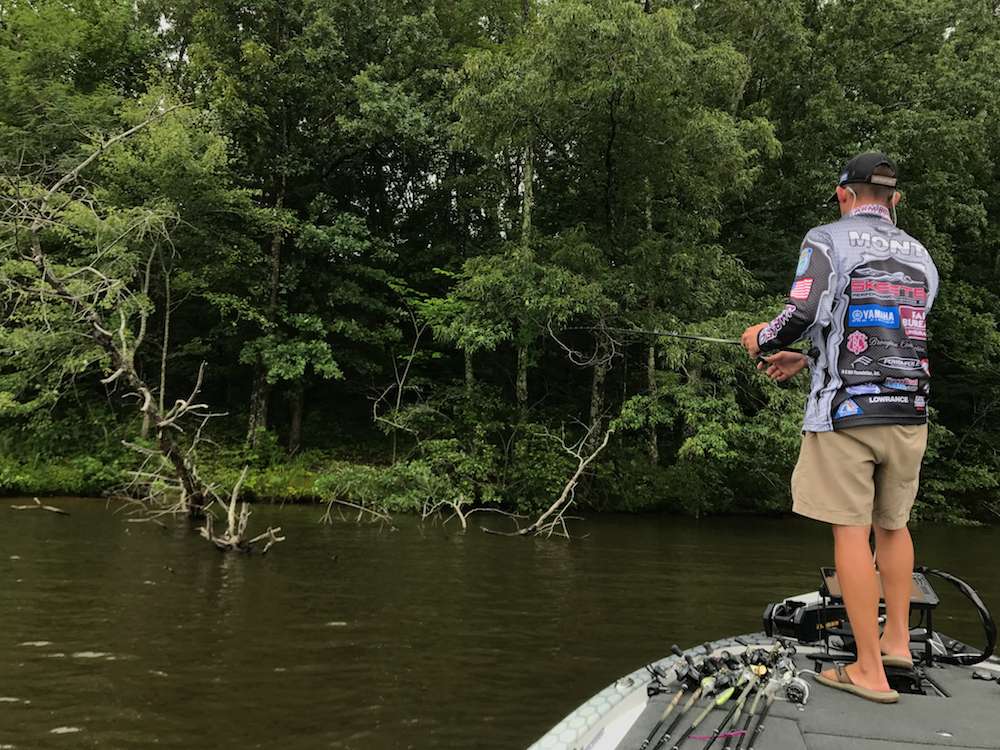
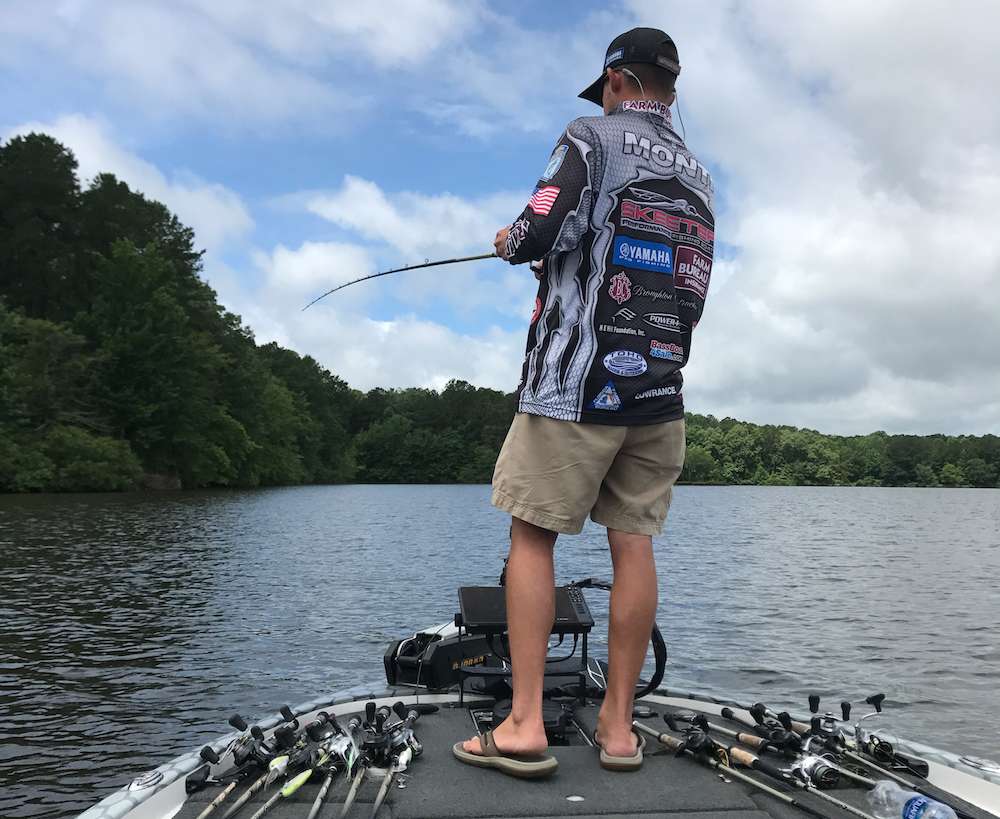
2 HOURS LEFT11:33 a.m. Monti catches another undersized bass on the Carolina rig; it spits up a spoonful of guppy-sized minnows. âSo thatâs what these little bass are feeding on!â 11:36 a.m. An entire school of immature bass follows Montiâs 6XD to the boat. âThere must have been an incredible spawn on this lake to make all those babies.â
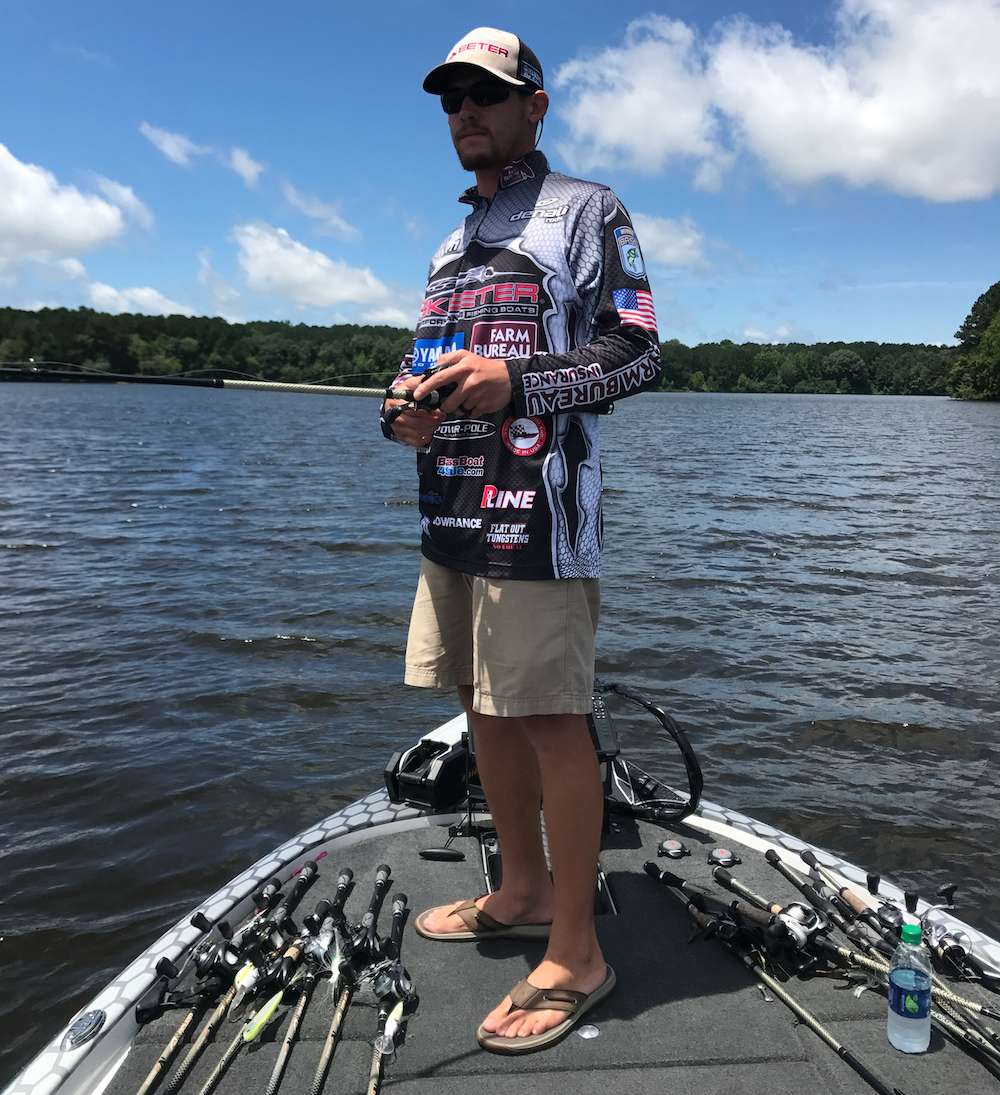
1 HOUR LEFT12:32 p.m. Monti tries the Horny Toad in the pads.
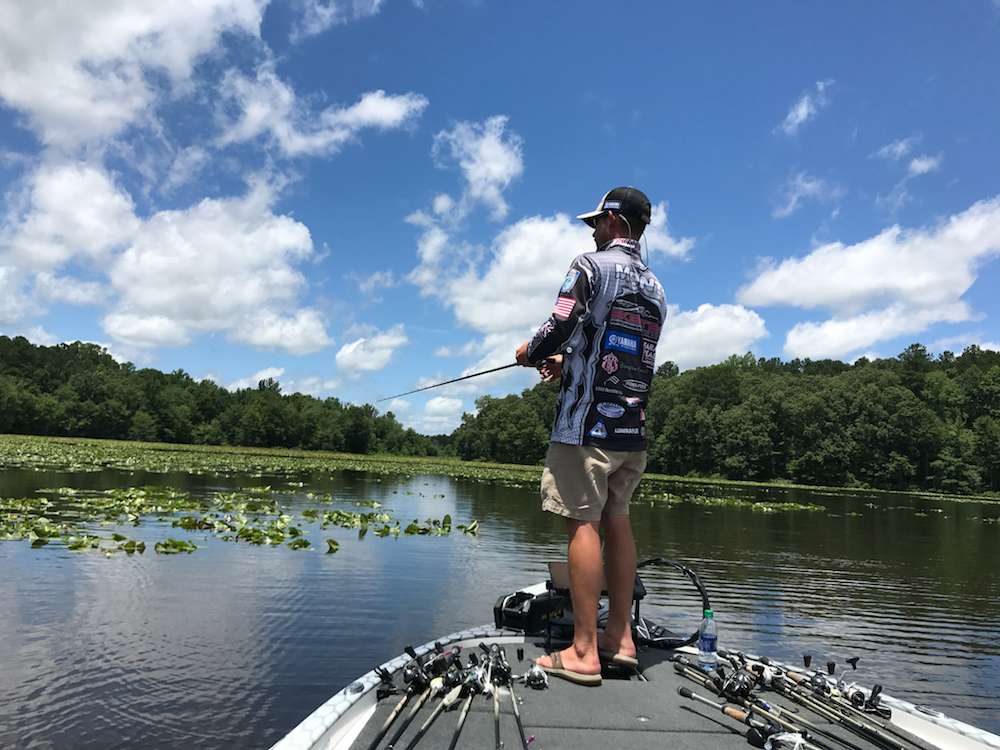
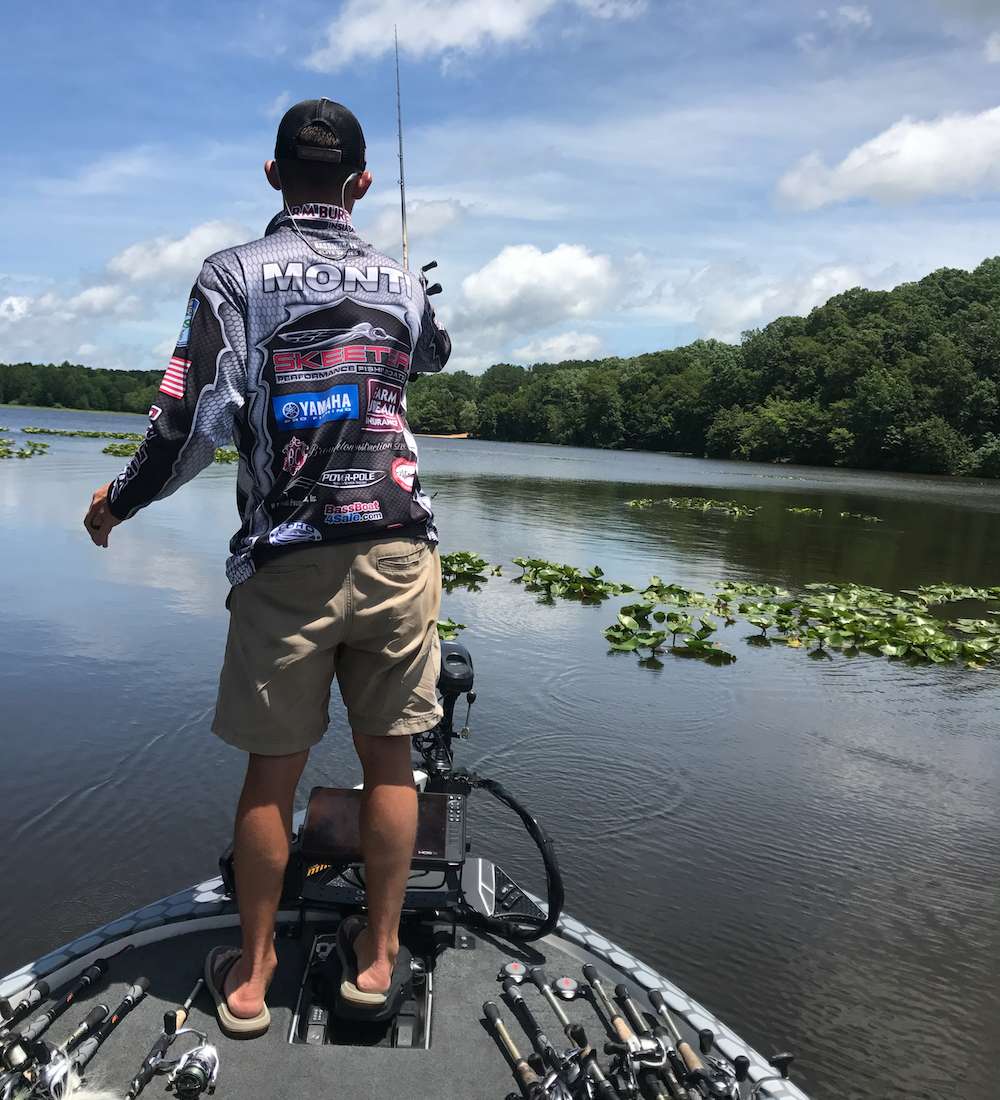
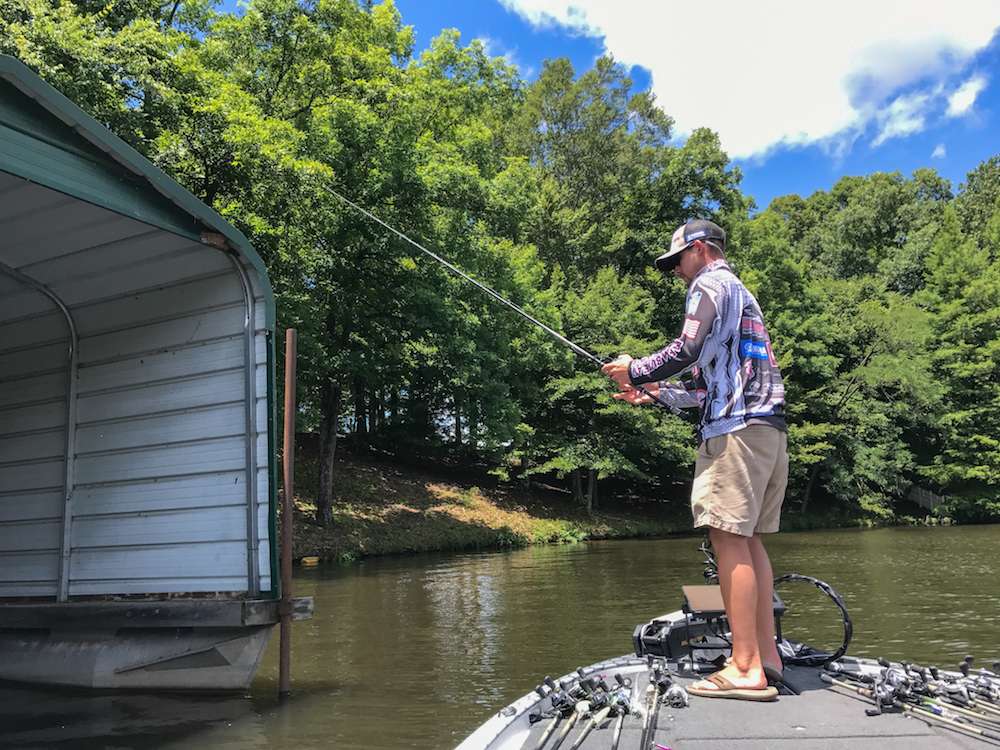
THE DAY IN PERSPECTIVE
âI believe the volatile weather knocked this lake totally out of kilter today,â Monti says. âThe pressure change must have been huge; it was like an October day once the skies cleared. It may take a couple days for conditions to stabilize, but if I were to fish here tomorrow, Iâd spend more time looking for deep offshore fish since they are less likely to be impacted by a frontal passage than are shallow bass.â
WHERE AND WHEN MONTI CAUGHT HIS KEEPER BASS
2 pounds, 4 ounces; Â10-inch green pumpkin and red Bruiser Baits worm; rocks near runoff; 10:04 a.m.
TOTAL: 2 POUNDS, 4 OUNCES
